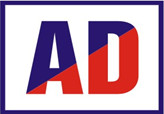The owner’s equity includes the initial investment and any additional investments since the company’s creation. This is the money the owner paid into the company to get it up and running. As a small business owner, it represents the value you own in your company. Ultimately, if you liquidate the company by selling all its assets and paying off all liabilities, it’s how much you would retain. But if all goes to plan, you still have your owner’s equity — your share of the business assets, minus any outstanding debts. The owner’s equity is negative if the business’s liabilities are bigger than its assets.
On the other hand, partnerships and companies typically have multiple owners who share responsibilities and equity. In addition to the balance sheet, businesses also have a capital account that shows the amount of equity contributed by owners and partners. At the end of the accounting period or fiscal year, you’ll record the owner’s equity on the balance sheet. The value of the owner’s equity decreases when the owner withdraws funds or takes a loan (recorded as a liability on the balance sheet) to purchase an asset for the business.
Is It Still Possible to Achieve Profitable Growth in Ecommerce?
There are multiple types of equity that a business can possess, but each one depends on the role of the individual who can claim that equity. With that in mind, let’s dive into the different types and what they mean for your business.
Equity can also refer to the company’s net worth or shareholders’ equity. This blog will look at the different aspects of owners’ equity and how companies calculate their owners’ equity. You can https://pkportal.ru/catalog/delovie_uslugi/?view&p=7 calculate it using the owner’s capital, the profits generated and the owner’s draw. At the beginning of the startup, the owner’s equity is the capital and the earnings generated by the company.
What’s a statement of owner’s equity?
The statement of owner’s equity is meant to be supplementary to the balance sheet. The document is therefore issued alongside the B/S and can usually be found directly below (or near) it. The theory behind the statement of homeowners equity is to reconcile the gap balances of equity accounts in http://laserpulse.ru/?page=193 an exceedingly company with the closing credits and gift this info to external users. It means that the business owes more than it owns, which should be addressed promptly. It can be used to finance a variety of business activities, such as expansion, acquisitions, or research and development.
- The balance sheet contains the ending balances of the owner’s equity, but it does not help in determining the reasons behind the changes occurring in the owner’s equity accounts.
- It is the portion of a business’s assets that are owned by the business’s shareholders.
- To further illustrate owner’s equity, consider the following two hypothetical examples.
- Outstanding shares refers to the amount of stock that had been sold to investors but have not been repurchased by the company.
- The balance sheet — one of the three core financial statements — shows a company’s assets, liabilities, and shareholders’ equity at a specific point in time.
Owner’s equity is one of the three components of the accounting equation so understanding its basics is a key step for beginners who are learning accountancy. We take monthly bookkeeping off your plate and deliver you your financial statements by the 15th or 20th of each month. Due to the cost principle (and other accounting principles) the amount of owner’s equity should not be considered https://rusimpex.ru/Content_e/TradeServices/sendinfo.php?parloc=main to be the fair market value of the business. With two machines, he generates twice the amount of operating profit, doubling his operating earnings, minus interest on the loan, allowing him to grow his equity account. Capital reflects the sources of financing needed to acquire assets for a business. Here’s everything you need to know about owner’s equity for your business.
Owner’s Equity on a Balance Sheet
If the business owes $10,000 to the bank and also has $5,000 in credit card debt, its total liabilities would be $15,000. Owner’s equity is typically seen with sole proprietorships, but can also be known as stockholder’s equity or shareholder’s equity if your business structure is a corporation. If you look at the balance sheet, you can see that the total owner’s equity is $95,000. That includes the $20,000 Rodney initially invested in the business, the $75,000 he took out of the company, and the $150,000 of profits from this year’s operations.
The closing balances on the statement of owner’s equity should match the equity accounts shown on the company’s balance sheet for that accounting period. Private equity generally refers to such an evaluation of companies that are not publicly traded. The accounting equation still applies where stated equity on the balance sheet is what is left over when subtracting liabilities from assets, arriving at an estimate of book value. Privately held companies can then seek investors by selling off shares directly in private placements. These private equity investors can include institutions like pension funds, university endowments, insurance companies, or accredited individuals. Shareholder equity can also be expressed as a company’s share capital and retained earnings less the value of treasury shares.

